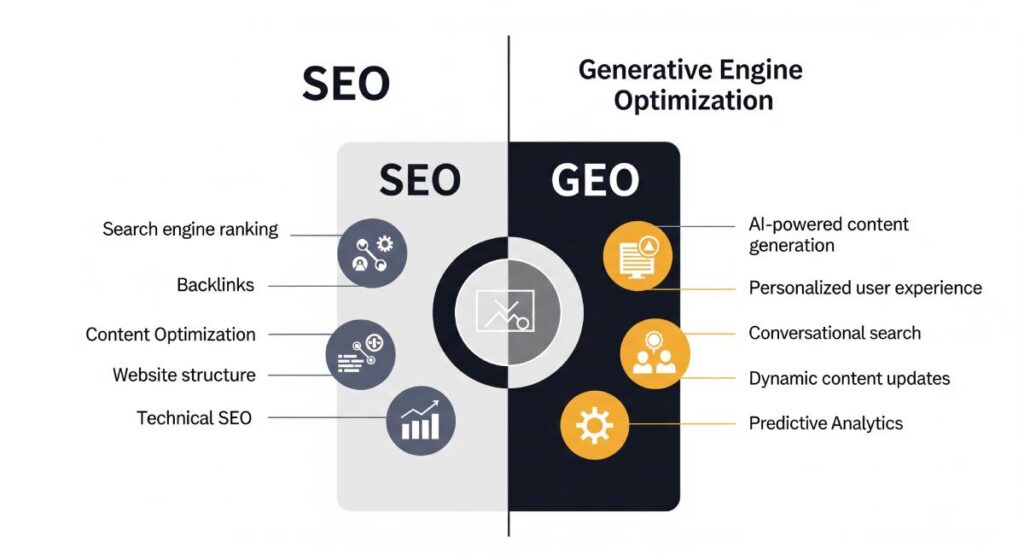 Without a clear plan, efforts to gain online visibility often fall short and produce little to no return. However, having a focused SEO campaign gives your efforts direction, helping your website gain visibility in ways that actually move the needle and drive real results.
Without a clear plan, efforts to gain online visibility often fall short and produce little to no return. However, having a focused SEO campaign gives your efforts direction, helping your website gain visibility in ways that actually move the needle and drive real results.
Search engine optimization continues its evolution into an in-depth discipline involving site structure, content relevance, user experience, and authority signals. Ultimately, your success in this space depends on understanding how all these elements fit together and where your priorities should be.
This guide walks through the full process of planning an SEO campaign, covering the foundational work needed on your website, the importance of content alignment, and the role of external signals like backlinks and mentions. Each section offers some practical insights that are designed to support both first-time site owners and seasoned marketers looking to refine their approach.
Top Factors To Consider When Creating An On Page SEO Checklist
Every effective SEO strategy starts with and works from the right on page foundation. A well-structured on page SEO checklist brings clarity to what matters most, from technical setup and content quality to user experience. Taking time to carefully organize and refine these elements gives your site a stronger opportunity to perform in search.
Keyword Targeting & Content Relevance
Effective keyword selection involves recognizing exactly what your audience seeks and clearly addressing those expectations through targeted content.
Popular tools such as Google Search Console, Semrush, Ahrefs, and similar platforms assist in identifying user interests, uncovering commonly asked questions, and highlighting phrases tied directly to search intent. Intent-driven keyword selection boosts the ability of a page to rank successfully, aligning closely with audience expectations and search behavior.
Strategically incorporating keywords into page titles, headers, body paragraphs, and metadata is essential; placement should remain subtle and naturally blended into the narrative. Content that feels authentic to readers builds trust and sustains engagement. Search algorithms value thorough and contextually appropriate content; therefore, integrating related terms and synonyms enhances overall topic relevance and reduces repetitive phrasing.
True relevance arises from effectively addressing audience queries or clearly resolving user concerns. Developing meaningful, substantive content that directly matches keyword intent positions pages as authoritative sources.
An organized on page SEO checklist incorporates a detailed strategy for carefully selecting keywords tied to user intent, then building focused content around these keywords. Successful SEO depends upon meeting visitor expectations precisely, maintaining readability, and delivering clear value through accurately targeted content.
SEO Title & Meta Description Optimizations
 Meta titles and descriptions serve as your content’s first introduction to users in the search results. A strong title prominently features your primary keyword, fits neatly within 50 to 60 characters, and clearly reflects what the page actually delivers. The aim with them is to communicate immediate relevance and value so searchers confidently choose your page over competing results.
Meta titles and descriptions serve as your content’s first introduction to users in the search results. A strong title prominently features your primary keyword, fits neatly within 50 to 60 characters, and clearly reflects what the page actually delivers. The aim with them is to communicate immediate relevance and value so searchers confidently choose your page over competing results.
Meta descriptions, although not a direct factor for rankings, significantly influence click-through rates. They act as concise previews, summarizing the page in compelling yet natural language. Incorporating a relevant keyword here helps signal alignment with user intent without sounding artificial.
Regularly reviewing and refining these elements enhances user engagement, boosts traffic quality, and reduces bounce rates. Including this optimization step in your on page SEO checklist helps keep titles and descriptions aligned with evolving user behavior and search engine practices.
The Fundamentals Of Technical SEO
Having a fast, responsive website establishes credibility among visitors and allows search engines to interpret site content effectively.
Quick loading speeds significantly influence user experience, especially on mobile devices, where sluggish performance typically results in increased bounce rates. Implementing image compression, reducing unnecessary code, and selecting hosting providers that emphasize speed collectively contribute to enhanced website performance.
Mobile-responsive designs have become mandatory for admins. Nowadays, websites must fluidly adapt layouts to various screen sizes, making sure that interactive components remain intuitive and accessible regardless of the device that’s used.
A good responsive design adapts to every screen size, giving users a smooth experience whether they are on desktop or mobile. Structured data, another essential aspect of technical SEO, assists search engines in accurately classifying and presenting your site’s content within search results.
Including regular technical audits within your SEO routine identifies and addresses potential performance problems before they negatively impact rankings. Audits cover numerous elements, such as broken links, proper indexing, page speed optimization, and correct implementation of structured data.
Maintaining thorough oversight on technical aspects preserves site health, allowing continuous improvement of user experience and search visibility. The use of an on page SEO checklist directly supports overall SEO effectiveness, improving both usability and ranking potential.
Advanced Interlinking Strategies
 Effective internal linking improves user experience while clearly communicating site structure to search engines.
Effective internal linking improves user experience while clearly communicating site structure to search engines.
Linking related content together creates deeper topical relevance, encourages visitors to look into additional resources, and evenly distributes ranking signals across multiple pages. Anchor text chosen for internal links must be descriptive, clearly reflecting the content found on the linked pages.
Strategically connecting pages within cornerstone content or topic clusters significantly enhances overall website authority.
Thoughtful placement of internal links strengthens topical associations, improving the likelihood that linked content appears prominently in search results. Regular audits using tools such as Screaming Frog or Sitebulb can identify missing internal links, detect overly repetitive anchor text, and highlight areas for improvement.
Focusing explicitly on internal linking strategy during on page SEO audits supports stronger content networks within a site. A methodical approach to internal links maximizes content discoverability, so that users and search engines alike recognize content relationships and topic significance.
Prioritizing internal linking contributes directly to site clarity, supports user journeys, and enhances overall search visibility. Your SEO strategy should integrate clear guidelines around internal linking, continuously optimizing site structure to improve usability and SEO performance.
Image Alt Text & File Sizes
Visual content significantly influences user engagement, yet proper optimization matters greatly for both accessibility and overall website performance.
Alt text provides essential context for screen readers, clearly communicating the content and purpose of images to visually impaired users. It also helps search engines understand and properly index your visual elements, indirectly improving your content’s discoverability.
Each image should contain a concise, descriptive phrase in the alt attribute, written naturally without unnecessary repetition of keywords. Large image files, on the other hand, often negatively impact page load speeds, harming user experience and potentially affecting rankings.
However, you can compress images effectively using dedicated optimization tools such as TinyPNG or by utilizing modern file formats like WebP, which significantly reduce file sizes while maintaining excellent visual clarity.
Consistently optimizing image alt text and file sizes within your on page SEO checklist contributes positively to page performance, accessibility standards, and long-term SEO outcomes.
Off Page SEO Techniques That Still Work In 2025
Success in SEO goes beyond just optimizing your website; that’s why building authority, credibility, and visibility across external platforms is just as important. Many off page SEO techniques continue to perform well when done with purpose, helping to reinforce rankings, grow your reach, and attract meaningful referral traffic.
Content Generation Designed For Outreach
 Creating valuable content that naturally attracts shares continues to be a highly effective off page SEO strategy.
Creating valuable content that naturally attracts shares continues to be a highly effective off page SEO strategy.
Publishers, niche bloggers, and authority websites frequently link to original resources that offer actionable insights, accurate data, or practical solutions. Adjusting your content specifically to resonate with targeted external audiences significantly increases the likelihood of earning high-quality backlinks.
Content formats that consistently generate attention include in-depth case studies, data reports, authoritative whitepapers, and interactive online tools or calculators. In addition to this, visually appealing content such as infographics and graphical breakdowns tend to perform exceptionally well, thanks to their ease of consumption and social shareability. However, generating exceptional content is only part of the equation.
Actively promoting this content through targeted outreach efforts makes sure that it reaches the right influencers and decision-makers. Personalize your outreach emails, leverage social media platforms strategically, and actively participate in relevant online communities and forums to foster genuine engagement.
Ultimately, your goal is to create and distribute resources so compelling and useful that external sites link organically, viewing your content as a valuable reference point within their own discussions. A strong off page SEO approach starts by intentionally designing content with outreach in mind.
Press Release Syndication & Guest Posting
Thoughtful implementation of press releases and guest posting continues to support effective off page SEO techniques. Press releases offer a direct path to gaining media exposure when connected to events like product launches, significant business milestones, or newly published data.
Successful press release campaigns depend heavily on targeted distribution via respected platforms such as PRNewsWire or Business Wire, each capable of reaching industry-specific audiences and relevant media contacts. Prioritizing high-quality editorial standards helps these releases attract attention and resonate authentically with readers.
Guest posting also remains valuable, offering a platform to share insights and reach wider, established audiences. Selecting reputable websites within your niche rather than opting for broad or unrelated platforms increases the potential for engagement.
Content that’s submitted for guest contributions should emphasize fresh viewpoints, offer authoritative advice, or deliver compelling data. Editors prioritize contributions with depth and original value, so offering substantive material rather than promotional pieces can enhance acceptance rates and build lasting relationships.
Press releases and guest contributions collectively strengthen brand recognition, credibility, and referral traffic over time. Integrating editorial content into an off page SEO approach enhances visibility while simultaneously establishing trust and authority within relevant online communities.
Relevant Forum Engagement & Commenting Strategies
 Engaging authentically within forums and comment sections continues to benefit off page SEO techniques, provided the interactions focus primarily on delivering genuine assistance and useful information.
Engaging authentically within forums and comment sections continues to benefit off page SEO techniques, provided the interactions focus primarily on delivering genuine assistance and useful information.
Industry-focused communities on platforms like Quora, Reddit, LinkedIn groups, and niche-specific forums present valuable opportunities to establish authority and credibility. Consistent, thoughtful responses to questions or concerns posted by users help establish trust, fostering a positive reputation over time.
Participation aimed at helping others, rather than explicit promotion, often leads to more meaningful connections and organic interest in the contributor’s own platform or website.
Gradually, as users begin recognizing the contributor’s reliability and knowledge, strategically placed links become naturally acceptable elements within the discussion context. Your links must always clearly support or extend the conversation; anything overtly promotional risks undermining credibility and reducing effectiveness.
Forum and commenting strategies succeed best when applied consistently, respectfully, and with careful consideration of community expectations. User-focused contributions that prioritize genuine help over marketing encourage long-term engagement, resulting in referral traffic and indirect SEO benefits.
Thoughtful forum engagement continues to remain an effective tactic for amplifying visibility and reputation, provided it stays focused on serving community needs first.
Online Directory Submission
Local and industry-specific directories remain valuable, particularly for businesses seeking stronger local SEO performance. Submitting accurate and consistent business details, including Name, Address, and Phone Number (NAP), allows search engines to confirm business authenticity.
These citations can significantly influence local map rankings, thereby enhancing visibility within local search results. Directories that apply editorial review and quality standards, such as Yelp, Apple Maps, Better Business Bureau, and other trusted niche-specific platforms, offer greater benefits compared to mass-submission services, which often include questionable listings.
Listing your business in reliable directories helps improve your reputation and gives users access to accurate details about your site. Your listings should always be detailed, clearly categorized, and frequently updated, reflecting any changes in services, hours, or location promptly.
Keeping directory profiles current and informative builds customer confidence and supports ongoing SEO gains. Regular audits of your directory presence can detect inaccuracies or outdated information, allowing timely corrections.
Effective off page SEO techniques emphasize careful selection of online directories and ongoing maintenance of submissions. Maintaining high standards for accuracy and consistency across directory listings supports long-term visibility, boosts local rankings, and enhances overall online authority for your business.
Top Online Directories That Impact SEO
Online directories continue to influence how search engines assess trust, relevance, and authority when it comes to websites and their content.
Accurate listings across well-established platforms support local visibility, build brand credibility, and create strong citation signals. SEO directories that maintain editorial standards and consistent formatting help reinforce your business presence in organic and map-based results.
Google Business Profile
 A well-maintained Google Business Profile significantly influences local SEO results, directly shaping how businesses appear in both general searches and map listings.
A well-maintained Google Business Profile significantly influences local SEO results, directly shaping how businesses appear in both general searches and map listings.
Complete profiles with precise and consistent information, including your official business name, physical address, phone number, and relevant categories, strengthen local signals that search engines actively use for rankings.
Actively managing the profile through regular photo uploads, timely posts about business events or promotions, and thoughtfully responding to customer reviews demonstrates to Google ongoing engagement and credibility.
Encouraging customers to leave reviews mentioning specific services or locations increases relevance, positively impacting visibility within Google’s local map pack. Maintaining consistency across other prominent online directories, such as Yelp or industry-specific platforms, further enhances citation accuracy and builds search engine trust.
Prioritizing the optimization and regular updating of your Google Business Profile provides a clear competitive advantage, particularly for businesses that depend on attracting and retaining a locally based audience.
Clutch
Clutch provides valuable exposure to businesses operating in B2B sectors, particularly in areas such as marketing, software development, and professional consulting.
The platform hosts listings that contain verified client reviews, detailed explanations of services, and in-depth case studies, alongside direct methods of contacting listed companies. These profiles frequently rank prominently in search engine results, offering authoritative backlinks that positively affect domain authority and overall SEO performance.
In contrast to generic business directories, Clutch emphasizes depth and legitimacy through a thorough review system involving direct client interviews. Structured categories, organized according to industry and specific services offered, simplify the process for potential clients searching for appropriate providers.
Maintaining and regularly updating a detailed profile on Clutch actively contributes to improved online visibility, helps build credibility in your market niche, and can significantly influence client acquisition.
UpCity
UpCity connects businesses with service providers through curated directories, transparent client reviews, and performance-based rankings that reflect service quality.
The platform serves agencies, consultants, and tech-focused firms by offering a professional space to highlight service capabilities, pricing structures, and verified client experiences. Each profile contributes to a stronger digital presence, offering both citation value and third-party validation.
Inclusion on UpCity supports a broader SEO strategy, complementing other directory listings while offering added visibility through organic search.
The platform promotes consistent profile updates, encouraging businesses to maintain accurate and up-to-date details that align with current offerings. Visibility on a trusted, industry-focused platform can positively influence brand perception and increase lead opportunities over time.
For businesses that are aiming to expand reach and demonstrate credibility in competitive sectors, UpCity provides a meaningful channel that strengthens both reputation and search engine performance.
Bing Places
 Bing Places contributes to local search visibility within Microsoft’s search engine and map platforms, offering businesses another way to reach users.
Bing Places contributes to local search visibility within Microsoft’s search engine and map platforms, offering businesses another way to reach users.
While Bing commands a smaller share of the search market compared to Google, it remains influential in certain demographics, particularly among users relying on Windows-integrated services. Listing your business on Bing Places increases the chances of appearing in map results and helps maintain consistency across your broader citation profile.
Information included on your Bing listing should exactly match details found on other directories to support trust signals across the web. Use clear, high-quality photos, provide accurate contact information, set correct business hours, and choose the most relevant categories.
Although Bing’s engagement tools are more limited than Google’s, the platform still delivers measurable SEO value. Keeping your Bing Places profile active and aligned with your larger SEO efforts adds another layer of visibility and credibility in local search results.
BBB (Better Business Bureau)
The Better Business Bureau strengthens both public trust and search visibility, especially for businesses that depend on reputation and client confidence.
Earning accreditation reflects a company’s commitment to transparency and a willingness to resolve complaints in a professional manner. The listing itself serves as a strong citation that carries weight with search engines and is particularly impactful for legal, healthcare, home services, financial consulting, and other service industries.
Profiles on the BBB site include company overviews, consumer reviews, complaint records, and rating scores. These elements often rank well for branded search terms and can shape how potential clients perceive your business.
Keeping the information on your BBB profile aligned with other online listings supports greater consistency, which plays a role in improving local SEO outcomes. For businesses focused on reputation and client trust, maintaining an up-to-date BBB presence enhances both credibility and visibility across search platforms.
SEO Tools That Actually Make A Difference
With so many platforms available, it’s easy to get overwhelmed by the number of SEO tools on the market and trying to find the right choice to go with. It’s not enough to gather data; the right tools help you make sense of it and respond.
So, whether you’re auditing a site, tracking performance, or refining content, the right tools simplify decision-making and reveal opportunities you may otherwise miss.
SEO Analysis Tools We Recommend
 Effective SEO starts with having tools that provide reliable, actionable insights into how your website is performing across multiple fronts. Strong analysis platforms can highlight technical issues, track keyword positions, audit content gaps, and show how your backlink profile compares to others in your space.
Effective SEO starts with having tools that provide reliable, actionable insights into how your website is performing across multiple fronts. Strong analysis platforms can highlight technical issues, track keyword positions, audit content gaps, and show how your backlink profile compares to others in your space.
Some tools also integrate with site crawlers or analytics platforms to deliver a broader view of traffic patterns and site health. Choosing the right mix allows marketers to make smarter decisions, prioritize fixes that will have the most impact, and stay competitive in fast-moving search environments.
Ahrefs
Ahrefs is best known for its extensive backlink database, though its capabilities extend well beyond link tracking. The platform supports a wide range of SEO functions, including keyword discovery, website audits, SERP movement tracking, and identification of content opportunities that competitors may be missing. These features make it useful for both strategic planning and day-to-day performance monitoring.
Site Explorer remains one of the platform’s strongest assets, offering a detailed view into any domain’s top-performing pages, referring backlinks, and organic keyword rankings. Content Explorer adds another layer of value by helping users uncover popular content based on backlink volume and social engagement, making it easier to generate ideas that are backed by data.
The dashboard is designed to streamline oversight of multiple projects, which is especially useful for agencies or in-house teams managing several brands. Among available SEO platforms, Ahrefs stands out for its combination of data depth, clean interface, and continuous updates.
ScreamingFrog
ScreamingFrog is a desktop-based SEO tool designed for detailed technical audits, offering precision and control that many cloud platforms do not match. It allows users to scan websites locally, identifying a wide range of common issues such as broken links, redirect chains, duplicate content, missing meta tags, and incorrect status codes.
The software offers a real-time view of how a search engine crawls a site, which helps pinpoint structural or indexing problems that might otherwise go unnoticed.
Custom crawl settings let users filter and target specific types of data, making the tool equally effective for lean websites and large enterprise properties. It integrates with Google Analytics, Search Console, and PageSpeed Insights, giving users the ability to cross-reference technical data with performance metrics in one place.
For marketers, developers, and SEOs prioritizing clean architecture and accurate indexing, ScreamingFrog provides the depth and flexibility needed to support well-informed decisions.
Best SEO Reporting Tools
Analytics have little value if the insights remain buried in spreadsheets or dashboards that no one understands.
Quality reporting tools turn raw SEO data into clear, visual summaries that highlight trends, wins, and areas that need work. They make it easier to communicate progress across teams, demonstrate ROI to stakeholders, and support smarter decisions at every stage of a campaign.
Try to look for platforms that allow customization, integrate seamlessly with your data sources, and streamline recurring updates so reporting becomes a strategic asset, not a manual chore.
Google Looker Studio
Google Looker Studio, previously known as Data Studio, offers a flexible way to build interactive dashboards using real-time data from platforms like Google Analytics, Search Console, and Google Ads.
The tool simplifies how SEO performance is communicated, making it easier to track organic traffic, monitor changes in search rankings, and review user engagement patterns without sorting through raw data.
Users can start with existing templates or create completely customized reports adjusted to specific business priorities, client expectations, or campaign goals. Since metrics update automatically through live data connections, there’s far less need for time-consuming manual updates. Looker Studio simplifies complex SEO data into digestible reports that are easy to share.
Among the tools built for data visualization in digital marketing, it remains a popular option due to its adaptability, usability, and seamless compatibility with the broader Google suite.
WhatConverts
 WhatConverts gives businesses a clear picture of which marketing efforts are generating real leads, connecting each conversion to the specific keyword, campaign, or channel that triggered it. Having this level of visibility is especially useful for organizations investing in both SEO and PPC, since it shows which strategies produce meaningful results rather than just driving visits.
WhatConverts gives businesses a clear picture of which marketing efforts are generating real leads, connecting each conversion to the specific keyword, campaign, or channel that triggered it. Having this level of visibility is especially useful for organizations investing in both SEO and PPC, since it shows which strategies produce meaningful results rather than just driving visits.
The platform tracks conversions across multiple touchpoints, including phone calls, contact forms, and live chats, allowing for a more complete view of the customer journey. Reports can be broken down by landing page, source, or keyword, making it easier for marketers to identify what works and allocate budget more effectively.
For those focused on measuring impact and improving ROI, WhatConverts offers a practical way to link marketing activity with business outcomes. It helps move beyond surface-level metrics and supports smarter decisions grounded in clear, actionable data.
Notable SEO AI Tools
AI has become a major influence on how SEO strategies are executed, from content development to technical optimization. New tools powered by machine learning can suggest relevant keywords, rewrite metadata, audit pages, and even generate visuals that align with search trends. These tools help teams work faster without lowering the quality of the content being created.
Teams benefit from automated insights that guide better decisions without needing to comb through data manually. As search engines get smarter, using AI tools can help keep your strategy in step with changing algorithms and audience behavior.
SurferSEO
SurferSEO helps content creators align their pages with what already ranks well by analyzing top-performing results for a given keyword and offering real-time suggestions during the writing process. It evaluates factors such as word count, keyword usage, heading structure, and image placement, then assigns a content score that reflects how well your draft matches current SERP trends.
Writers can work directly within the platform’s editor, which updates as changes are made, or use the browser extension to apply the same insights while writing in Google Docs. The built-in content planner goes a step further by generating related article ideas, making it easier to build out topic clusters and support broader SEO strategies.
For marketers and content teams focused on data-backed optimization, SurferSEO delivers a streamlined workflow that replaces guesswork with clear, actionable guidance designed to support better ranking potential.
Pictory.ai
Pictory.ai allows marketers to turn blog posts into short-form videos that are optimized for search and social media engagement. After inputting a URL or script, the platform uses AI to extract core content, match it with relevant visuals, and generate a ready-to-share video with captions, which can be especially useful for YouTube SEO or expanding reach on platforms like Instagram, Facebook, and LinkedIn.
It saves time while helping brands reuse their written content across channels. As video continues to play a larger role in search behavior and social discovery, tools like Pictory.ai offer an efficient way to meet multimedia demands without needing an in-house production team.
For SEO teams looking to scale content formats, it brings a valuable new dimension to the growing toolkit of AI-powered SEO tools.
Steps To Developing A Winning Content Strategy Template
 Publishing content without a plan often leads to scattered efforts and leads to underwhelming results. A strong content strategy template helps organize your goals, shape your messaging, and guide consistent execution.
Publishing content without a plan often leads to scattered efforts and leads to underwhelming results. A strong content strategy template helps organize your goals, shape your messaging, and guide consistent execution.
Each part of the process should serve a defined purpose, helping you build topical authority, track performance, and make better decisions over time.
Setting Defined KPIs: Keywords, Engagement, Conversions
Every content initiative should begin with having a clear understanding of what success means for your business. Before writing even starts, it helps to define performance indicators that align directly with broader goals.
Common metrics to measure include improvements in search rankings for target keywords, growth in organic sessions or time on page, reduction in bounce rates, or increases in specific conversion actions such as form completions, calls, or newsletter signups.
Every piece of content needs to support a defined goal, whether that’s engagement, conversion, or visibility.
A service page centered around high-intent keywords might aim to drive lead submissions, while an educational blog post could focus more on increasing dwell time, encouraging return visits, or attracting backlinks. Different formats serve different functions, so correctly mapping them to measurable results makes optimization more effective.
Clear KPIs create structure around your content planning and make it easier to evaluate success or adjust direction when necessary. A strong content strategy template keeps performance benchmarks front and center, helping teams stay aligned with business objectives and focused on measurable impact throughout the entire campaign.
Perform A Competitor Gap Analysis
A competitor gap analysis helps uncover content opportunities that others have missed or failed to fully develop. By using Ahrefs, Semrush, or other SEO tools, you can compare keyword footprints and discover where your competitors rank and where they fall short. This insight allows you to prioritize topics that can realistically outperform what already exists in search results.
You should try to focus on areas where competitor content is outdated, lacks depth, or doesn’t fully answer user intent. That’s where you can offer something more useful or complete to prospective users. Try to avoid simply copying top-performing articles; instead, you should aim to create content that is better researched, more actionable, or more aligned with what searchers actually want.
Adding this step to your content strategy template gives your efforts a clearer direction and keeps you from wasting time competing on over-saturated or low-return topics.
Plan A Library Of Content To Build Off One Another
 Publishing stand-alone articles without a broader context often limits their potential impact. A stronger approach involves building a content library where each piece supports and connects with others.
Publishing stand-alone articles without a broader context often limits their potential impact. A stronger approach involves building a content library where each piece supports and connects with others.
Start by identifying broad themes that reflect the main topics your audience cares about, then develop supporting content that addresses subtopics in greater detail. These supporting articles should link back to a central pillar page, helping reinforce its authority and drive more traffic to related areas of your site. This interconnected structure improves both SEO and user engagement.
Connecting related content internally gives search engines stronger signals about your site’s underlying structure. Readers also benefit from having a clear path through your content, moving naturally from general overviews to deeper insights.
A defined strategy helps clarify how each article contributes to the whole. Mapping out your content library in advance keeps production organized, supports long-term SEO goals, and encourages consistency across all published materials.
Types Of PPC Campaigns & When To Consider Running Them
How you structure PPC campaigns depends on the type of customer you’re targeting and when they’re ready to act. Choosing the right format helps avoid wasted spend and gives your campaign greater structure from the very beginning.
PPC campaigns can be structured around specific goals, whether you’re focused on generating leads, rebuilding traffic, or increasing brand visibility.
Search Campaigns
Running search campaigns offers one of the most efficient ways to connect with users who already know what they want and are actively looking for it.
When someone types in a high-converting keyword into a search engine, these ads are among the first things that they see. Because users are often near the decision-making stage, search campaigns typically generate stronger engagement and better conversion rates compared to more general ad formats.
Success starts with targeting the right keywords. Focus on terms that indicate action or urgency, such as service-based phrases, product comparisons, or local modifiers like “near me.” High-intent queries often reflect users who are ready to take the next step, whether that means making a purchase, scheduling a consultation, or requesting more information.
Strong ad copy increases engagement and helps campaigns deliver better results. Aligning your headlines and descriptions with what users are searching for improves click-through rates and builds immediate relevance.
For businesses looking to capture immediate demand with clear intent signals, search campaigns remain one of the most dependable forms of pay-per-click advertising.
Display Campaigns
Display campaigns offer a strategic way to introduce your brand to people who match your target audience but may not be actively searching yet.
The Google Display Network places ads on a wide range of online properties to help extend reach. Using visuals such as banners, animations, or short videos, display campaigns help build brand familiarity and keep your business top of mind as users browse online content.
While direct conversions are generally lower compared to search campaigns, display ads play a broader role in the overall marketing mix. They support awareness-building efforts and help influence users during the early stages of the buyer journey. Display campaigns are also highly effective for remarketing, allowing brands to reconnect with previous visitors through targeted visuals that reinforce previous interest.
For businesses entering a new market, introducing a new service, or aiming to expand brand visibility, display advertising provides an accessible and cost-efficient way to generate attention. Structuring these campaigns around audience segments, interests, or behaviors can drive meaningful reach without overspending.
When used alongside more targeted approaches, such as search or remarketing campaigns, display ads strengthen overall performance and help fill in the gaps across the customer journey.
Remarketing Campaigns
 Remarketing campaigns offer a second chance to connect with visitors who left your site without completing a desired action.
Remarketing campaigns offer a second chance to connect with visitors who left your site without completing a desired action.
These ads focus on individuals who have already interacted with your pages, whether they viewed specific products, browsed service details, started a checkout, or began filling out a lead form. Because these users are already familiar with your brand, remarketing campaigns typically generate higher returns compared to ads targeting completely new audiences.
Adjusting messages based on user behavior adds precision to your strategy. For instance, someone who spent time on a pricing page might respond well to a limited-time offer or incentive, while a cart abandoner may be more likely to return when presented with a reminder paired with free shipping. Customizing creative assets to reflect the user’s previous touchpoints increases relevance and drives higher engagement.
Managing the frequency, rotating ad creatives, and using exclusion lists all play a role in preventing ad fatigue and limiting wasted impressions. Effective remarketing keeps your brand present without overwhelming your audience.
Among paid advertising strategies, remarketing stands out for its ability to re-engage users already moving through the decision-making process, offering an efficient and cost-effective way to convert interest into measurable results.
Local Service Ads
Local Service Ads (LSAs) are designed specifically for businesses that operate within defined geographic areas, such as HVAC contractors, electricians, attorneys, or home cleaning services.
These ads appear at the very top of relevant local search results, often above traditional paid listings, and display essential business details like ratings, service areas, and customer reviews. The “Google Guaranteed” badge adds a layer of trust that can influence consumer decisions, especially for those seeking reliable, nearby providers.
LSAs offer a direct lead-based pricing model instead of paying per click. Businesses only pay when a potential customer reaches out directly through the ad, which helps create a more stable and trackable return on ad spend.
LSAs can be targeted by zip code, service type, and business availability, allowing advertisers to adjust their reach to fit local demand. Review quality, response time, and background checks can all influence ad placement and visibility.
The ability to connect with motivated customers without requiring them to browse through your site shortens the path to conversion and makes the buying process more efficient.
Start Planning Your SEO Campaign Today
A strong strategy, developed by those who know the market, drives tangible performance. If you’re building your first SEO strategy or refining one that’s already in motion, 321 Web Marketing is ready to help.
Our consultants take the time to understand your goals, analyze your current performance, and create a custom approach that’s designed to meet the distinct needs of your business. Start planning for stronger outcomes by booking your strategy session today.







